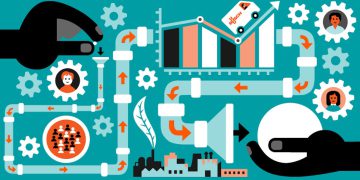From May 30 to June 3, the sales team of biogas specialist Weltec Biopower will be available in Hall A4, Stand 217, to answer all questions relating to the construction and retrofitting of anaerobic energy plants: The range includes proven processes from the field of biogas technology. The high savings potential of these processes is demonstrated by the modernization of the municipal wastewater treatment plant in Bückeburg, Germany, which serves 33,000 inhabitants. Since Weltec Biopower switched to anaerobic sludge stabilization in 2021, operation of the plant at full load has become significantly more economical.
As general contractor, the company was responsible for the construction of the wastewater treatment system at the municipal sewage treatment plant. In addition to the earthworks, the construction of the foundation and the electrical cabling, the work included the construction of a new static sludge thickener, a machine room for the combined heat and power plant, the control and pumping station, and a stainless steel digester with a gas storage roof. Thanks to anaerobic wastewater treatment, the sludge volume has dropped by 35 percent, resulting in a significant reduction in transport and disposal costs. In addition, the digester gas produced can now generate around 465,000 kWh of electricity at full load. This allows the operator to meet about 40 percent of its electricity needs and save two-thirds of its electricity costs.
“In view of the new greenhouse gas reduction targets and the sharp rise in energy prices, an anaerobic stage is an economically attractive solution for wastewater treatment plant operators, which also benefits from public subsidies. Ultimately, the combination of wastewater treatment, power and heat generation, and climate protection enables more efficient operation, especially for small and medium-sized wastewater treatment plants.”
- Jens Albartus, Managing Director
How these goals can be achieved with organic waste is demonstrated by a WELTEC plant in Piddlehinton, southwest England. Here, a mix of food waste, expired food from supermarkets and organic waste is fed to the biogas plant. In addition to the substrate mix, the technical approach is also special. Before feeding and shredding, a de-packaging machine separates the food from the packaging.
Another efficiency bonus: The waste heat from the cogeneration plant is sold to a nearby feed producer, which also uses most of the electricity. The biogas plant operator feeds the excess electricity directly into the power grid, generating further revenue. The digestate from the process meets the requirements of the British industry standard PAS-100, so local farmers can use it as fertilizer.
Following a capacity expansion in 2014 from 20,000 t of substrate input per year to 30,000 t, the Group installed an additional digester and storage tank, as well as GasMix blending systems and a separation unit. A plant with this equipment would also support the conversion to biomethane production.

















